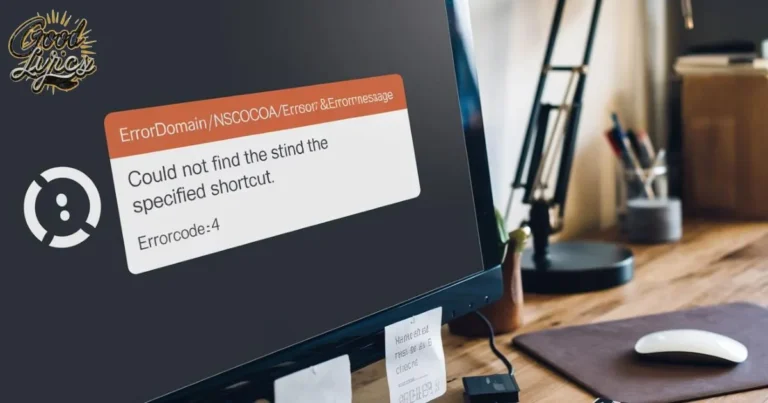
In the vast landscape of computer networking, certain combinations of numbers and symbols hold immense significance. One such enigmatic sequence is 127.0.0.1:62893. To the uninitiated, it might appear as a random string of digits, but for developers, network administrators, and tech enthusiasts, it represents a gateway to a world of local testing, debugging, and software development.
In this comprehensive guide, we’ll unravel the mysteries of this local host address and explore its multifaceted applications in the realm of technology.
Understanding the Basics: Breaking Down 127.0.0.1:62893
Before we dive into the intricacies of this address, let’s dissect its components to gain a fundamental understanding of what each part represents.
The Loopback Address: 127.0.0.1
The first part of our address, 127.0.0.1, is known as the loopback address or localhost. This special IP address serves a unique purpose in the world of networking. Unlike typical IP addresses that identify devices on a network, 127.0.0.1 always refers to the device you’re currently using. It’s essentially your computer’s way of talking to itself.
You may want to Read: https //www.microsoft.com /ink 10 Game-Changers: Your Digital Potential
When a program or service on your machine attempts to connect to 127.0.0.1, it initiates a conversation with the same device, bypassing external network interfaces. This internal communication channel is invaluable for testing and development purposes, as we’ll explore it in more detail later.
The Port Number: 62893
Following the colon in our address is the number 62893. In networking terms, this is known as a port number. Ports act as communication endpoints, allowing different services and applications to share the same IP address without confusion. While some port numbers are standardized (like 80 for HTTP or 443 for HTTPS), others, like 62893, are often dynamically assigned or chosen for specific purposes by developers or applications.
The Significance of 127.0.0.1:62893 in Software Development
Now that we’ve broken down the components, let’s explore why this particular combination holds such importance in the world of software development and networking.
Local Testing and Debugging
One of the primary uses of 127.0.0.1:62893 is in the realm of local testing and debugging. When developers are working on web applications, APIs, or other network-based software, they need a way to test their creations without deploying them to a live server. This is where localhost comes into play.
By running a local server that listens on a specific port (in this case, 62893), developers can simulate a network environment entirely on their machine. This allows them to:
- Test functionality without an internet connection
- Make rapid changes and see immediate results
- Debug issues in a controlled environment
- Avoid potential conflicts with production systems
Development Environments and Frameworks
Many popular development environments and frameworks utilize localhost addresses with specific ports for various purposes. For instance, when using Visual Studio Code for remote debugging, you might encounter the address 127.0.0.1:62893 as part of the debugging process. Similarly, web development frameworks like Django or Flask often spin up development servers on localhost, using various ports to serve applications during the development phase.
You may want to Read: Minecraft Icons & Banners: 10 Secrets to Epic Designs (2024)
Security and Isolation
Using 127.0.0.1:62893 (or any localhost address) provides an added layer of security during development. Since the traffic never leaves your machine, it’s inherently isolated from external threats. This isolation allows developers to work on sensitive projects or test security features without exposing their work-in-progress to potential attacks from the outside world.
Common Scenarios and Use Cases
Let’s explore some specific scenarios where you might encounter or utilize 127.0.0.1:62893 in your development or networking endeavors.
Web Development Workflows
Imagine you’re building a new web application. You’ll likely run a local server to test your HTML, CSS, and JavaScript during the development process. Your workflow might look something like this:
- Start a development server that listens on 127.0.0.1:62893
- Open your web browser and navigate to 127.0.0.1:62893
- Make changes to your code and refresh the browser to see updates
- Use browser developer tools to debug and optimize your application
This localhost setup allows for rapid iteration and testing without the need for constant deployment to a remote server.
API Development and Testing
Localhost addresses play a crucial role in the development process when creating or consuming APIs. Here’s how you might use 127.0.0.1:62893 in an API context:
- Develop an API that runs locally on port 62893
- Use tools like Postman or Curl to send requests to http://127.0.0.1:62893/api/endpoint
- Test different API methods (GET, POST, PUT, DELETE) without affecting live data
- Simulate various scenarios and edge cases in a controlled environment
This local testing approach ensures that your API functions correctly before integrating it with other systems or deploying it to production.
You may want to Read: 5 Benefits of Using a Term Insurance Calculator
Database Development and Management
Database administrators and developers often use localhost addresses when working with database systems. Here’s an example scenario:
- Install a database server (e.g., MySQL, PostgreSQL) that listens on 127.0.0.1:62893
- Connect to the database using a client application or command-line tool
- Develop and test database schemas, queries, and stored procedures
- Optimize database performance without impacting production data
This local setup allows for safe experimentation and development of database-driven applications.
Troubleshooting Common Issues with 127.0.0.1:62893
While localhost addresses like 127.0.0.1:62893 are incredibly useful, they can sometimes be the source of frustration when things don’t work as expected. Let’s explore some common issues and their solutions.
“Connection Refused” Errors
If you encounter a “Connection Refused” error when trying to connect to 127.0.0.1:62893, it usually means that no service is actively listening on that port. To resolve this:
- Ensure that your application or service is running
- Check if the correct port number is being used
- Verify that no firewall rules are blocking the connection
- Restart the service or application if necessary
Port Conflicts
Sometimes, you might find that port 62893 is already in use by another application. To address this:
- Use a tool like netstat or lsof to identify which process is using the port
- Either terminate the conflicting process or choose a different port for your application
- Update your application’s configuration to use the new port number
Firewall and Antivirus Interference
Overzealous security software can sometimes interfere with localhost connections. If you’re having trouble:
- Temporarily disable your firewall or antivirus software to test if it’s the cause
- Add an exception for your development environment or specific ports
- Consult your security software’s documentation for guidance on allowing localhost connections
Best Practices for Using 127.0.0.1:62893

To make the most of localhost addresses in your development workflow, consider these best practices:
- Document Your Port Usage: Keep track of which applications or services use specific ports to avoid conflicts and confusion.
- Use Environment Variables: Instead of hardcoding port numbers, use environment variables to make your applications more flexible and portable.
- Implement Security Measures: Even though localhost is inherently isolated, implement proper authentication and authorization in your applications from the start.
- Regular Port Scanning: Periodically scan your localhost for open ports to ensure you’re aware of all services running on your machine.
- Use HTTPS Locally: For web development, consider setting up HTTPS on your localhost to more closely mimic production environments.
Advanced Topics: Beyond Basic Usage
As you become more comfortable with localhost addresses like 127.0.0.1:62893, you can explore more advanced topics to enhance your development and networking skills.
You may want to Read: Unlock Returns: Top Crypto 30x Poised to Boom
Virtual Hosts and Multiple Projects
Learn how to set up virtual hosts on your local machine to run multiple projects simultaneously, each with its domain name (e.g., project1.local, project2.local) all pointing to different ports on 127.0.0.1.
Container Development
Explore how tools like Docker use localhost addresses to expose containerized applications and services, allowing for even more isolated and reproducible development environments.
Network Simulation
Discover how to use localhost addresses in combination with tools like Charles Proxy or Fiddler to simulate network conditions, test API responses, and debug complex networking scenarios.
The Future of Localhost in Development
As technology continues to evolve, the role of localhost addresses like 127.0.0.1:62893 in development workflows is likely to change. Here are some trends to watch:
- Increased Use of Containers: With the rise of containerization, developers may rely more on container-specific networking rather than traditional localhost addresses.
- Cloud Development Environments: As cloud-based IDEs and development environments become more popular, the concept of “localhost” may extend beyond a single machine.
- Enhanced Security Measures: Future operating systems and development tools may implement more sophisticated security measures around localhost usage to prevent potential exploits.
- Integration with Edge Computing: As edge computing grows, developers may need to simulate complex distributed systems locally, potentially changing how we use and think about localhost.
You may want to Read: wellhealthorganic buffalo milk tag
Conclusion
In the world of software development and networking, seemingly obscure combinations of numbers like 127.0.0.1:62893 can hold the key to efficient workflows, robust testing, and secure development practices. By understanding the fundamentals of localhost addresses and their associated ports, you empower yourself to create, test, and debug applications with greater confidence and control.
Whether you’re a seasoned developer or just starting your journey in the world of technology, mastering the use of localhost is an essential skill. It forms the foundation for local testing, provides a safe environment for experimentation, and serves as a stepping stone to more complex networking concepts.
As you continue to explore the vast landscape of software development, remember that the humble localhost address is always there, ready to serve as your personal testing ground and development sandbox. Embrace its simplicity, leverage its power, and let 127.0.0.1:62893 (and addresses like it) be your trusted companion on the path to creating amazing software.
FAQs
To round out our exploration of 127.0.0.1:62893, let’s address some frequently asked questions that developers and tech enthusiasts often have about localhost addresses and port usage.
Can I use 127.0.0.1:62893 on any operating system?
Yes, the localhost address 127.0.0.1 is standard across all major operating systems, including Windows, macOS, and Linux. The port number 62893 can be used on any of these systems, provided it’s not already in use by another application.
Is it safe to expose port 62893 to the internet?
Generally, it’s not recommended to expose any localhost ports directly to the internet. Doing so could potentially allow unauthorized access to your local services. If you need to make a local service accessible remotely, consider using proper security measures like VPNs, reverse proxies, or cloud hosting solutions.
How many localhost addresses are there?
While 127.0.0.1 is the most commonly used localhost address, the entire 127.0.0.0/8 range (from 127.0.0.0 to 127.255.255.255) is reserved for loopback purposes. This means you have over 16 million localhost addresses at your disposal, though 127.0.0.1 is typically sufficient for most use cases.
Can multiple applications use the same localhost port simultaneously?
No, only one application can bind to a specific port on a given IP address at a time. If you try to run multiple applications on the same port (like 62893), you’ll encounter port conflict errors. This is why it’s important to manage port usage carefully in development environments.
How do I choose which port number to use for my application?
While you can technically use any port number from 0 to 65535, it’s best to avoid well-known ports (0-1023) and many registered ports (1024-49151) to prevent conflicts with standard services. For development purposes, choosing a port in the dynamic/private range (49152-65535) is often a safe bet, unless your application or framework specifies a particular port to use.

Stay updated with the latest news and trending topics on my blogging website. From breaking stories to in-depth analyses, I bring you the most relevant updates concisely and engagingly!




